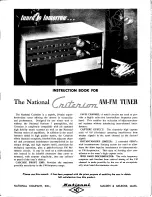
NEO-M9N - Integration manual
3.15.1.1 Parsing navigation data subframes
Each UBX-RXM-SFRBX message contains a subframe of data bits appropriate for the relevant
GNSS, delivered in a number of 32-bit words, as indicated by numWords field.
Due to the variation in data structure between different GNSS, the most important step in parsing
a UBX-RXM-SFRBX message is to identify the form of the data. This should be done by reading the
gnssId field, which indicates which GNSS the data was decoded from. In almost all cases, this is
sufficient to indicate the structure. Because of this, the following sections are organized by GNSS.
However, in some cases the identity of the GNSS is not sufficient, and this is described, where
appropriate, in the following sections.
In most cases, the data does not map perfectly into a number of 32-bit words and, consequently,
some of the words reported in UBX-RXM-SFRBX messages contain fields marked as "Pad". These
fields should be ignored and no assumption should be made about their contents.
UBX-RXM-SFRBX messages are only generated when complete subframes are detected by the
receiver and all appropriate parity checks have passed.
Where the parity checking algorithm requires data to be inverted before it is decoded (e.g. GPS
L1C/A), the receiver carries this out before the message output. Therefore, users can process data
directly and do not need to worry about repeating any parity processing.
The meaning of the content of each subframe depends on the sending GNSS and is described in the
relevant interface control documents (ICD).
3.15.1.2 GPS
NEO-M9N is designed to receive and track the L1C/A signals provided at 1575.42 MHz by the Global
Positioning System (GPS).
3.15.1.2.1 GPS L1C/A
For GPS L1C/A signals, there is a fairly straightforward mapping between the reported subframe
and the structure of subframe and words described in the GPS ICD. Each subframe comprises ten
data words, which are reported in the same order they are received.
Each word is arranged as follows:
Figure 25: GPS L1C/A subframe word
3.15.1.3 GLONASS
The receivers are designed to receive and track the L1OF signals GLONASS provides at 1602
MHz +k*562.5 kHz, where k is the satellite's frequency channel number (k = -7,...,5, 6). The ability
to receive and track GLONASS L1OF satellite signals allows design of GLONASS receivers where
required by regulations.
The GLONASS words are arranged as follows:
UBX-19014286 - R07
3 Receiver functionality
Page 64 of 95
C1-Public
















































